 Tassos Docs
Tassos Docs
- Getting Started
- Field Types
- Email Notifications
-
Integrations
- MailerLite
- Create User Accounts with Convert Forms
- MailChimp
- HubSpot
- GetResponse
- AcyMailing
- Content App
- Webhooks Addon
- Facebook Meta Pixel
- Google Adwords
- Sync submissions with your favorite app
- Integrate Drip Ecommerce CRM with Convert Forms
- Google Analytics
- Constant Contact
- SalesForce Web-to-Lead
- IContact
- Zoho CRM
- Elastic Email
- Zoho Campaigns
- Zapier
- Kit (ConvertKit)
- Brevo (Sendinblue)
- Campaign Monitor
- AWeber
- ActiveCampaign
-
Functionality
- Show or Hide Form Fields Based on User Joomla User Group
- Disabling Browser Autocomplete for Form Fields
- Scroll the Page to the Top When a Long Form is Submitted
- Display Submissions Count for a Specific Form
- Populate Drop Down, Radio Buttons or Checkboxes with a CSV File
- Automatically Delete Submissions Older Than X Days
- Silently POST Submitted Data to Any API or URL
- Automatically Save Each Submission to a JSON file
- Authenticate and Login a User with a Custom Joomla Form
- Auto-Populate a Form Field with an Article Data
- Add a placeholder text to a Dropdown
- Create Multilingual Forms in Joomla
- Create a custom Joomla User Registration Form
- Redirect User to a URL After Form Submission
- Export and Import Forms across different Websites
- Export Form Submissions to CSV
- Convert Forms
- Styling and Customization
- Payment Forms
-
Advanced Features
- How to Create a Quiz Form
- Displaying a Popup After Form Submission Using EngageBox
- Conditional Content Shortcode in Convert Forms
- Copy Value From One Field to Another
- Tasks
- Export Form Submissions with a Webhook URL
- Conditional Fields
- PDF Form Submissions
- Input Masks
- Field Calculations
- Auto-Populate Form Fields Using Query String
- Use Smart Tags
- Developers
- Troubleshooting and Support
-
Spam, Security & Compliance
- Enable Minimum Time to Submit
- Restrict Form Submissions Based on IP
- Enforcing a Custom Password Policy in Convert Forms
- Add Cloudflare Turnstile to your Joomla Form
- Implement the Iubenda Consent Database in Joomla with Convert Forms
- Add Custom Validations to Fields and Forms
- Add Math Captcha to your Form
- Prevent a Field From Saving in the Database
- Add hCaptcha to your Form
- Enable Double Opt-in
- Allow Form Submissions in Specific Date Range
- Ensure a Unique Value is Entered Into a
- Block Form Submissions Containing Profanity (Bad Words)
- Block Email Addresses or Email Domains
- Add Honeypot Protection
- Setting Up Google reCAPTCHA
- Create GDPR Compliant Forms
Integrate Drip Ecommerce CRM with Convert Forms
Are you interested in adding subscribers to your Drip lists through your Joomla forms? Are you seeking a solution to integrate Convert Forms with Drip and automate lead generation effortlessly? With the Drip app for Convert Forms, you can easily subscribe users in your Drip account each time someone submits your form.
This tutorial will guide you through using and configuring the Drip addon in Convert Forms.
Setting Up Drip Task
To set up the Drip task and sync your submissions to the Drip service, go into your form, and follow the steps listed below:
Select App
From within your form, click on Tasks > CREATE YOUR FIRST TASK.
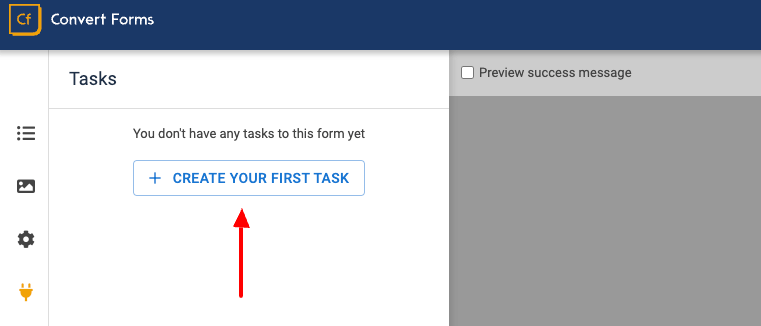
On the modal that will open, select the Drip task.
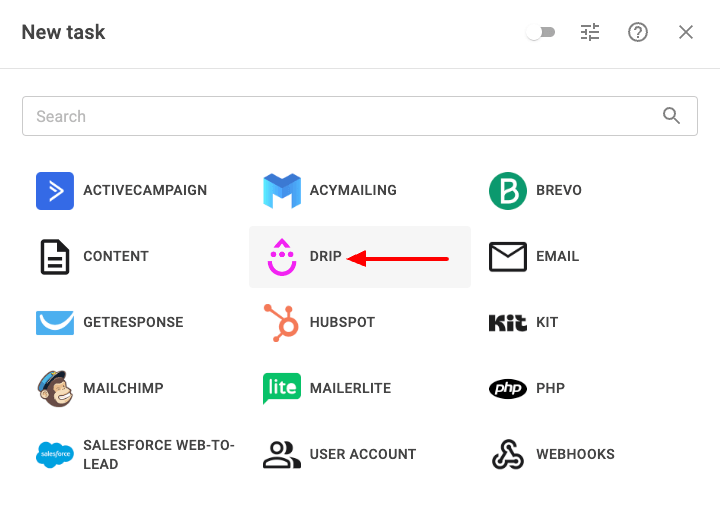
Select New Submission under Trigger and Add/Update Contact under Action on the next screen, and click CONTINUE.
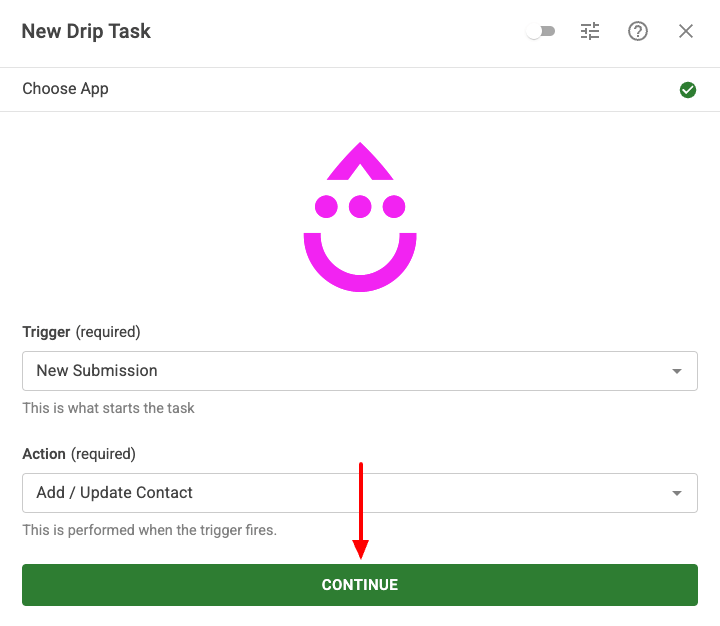
Create Connection
A connection is essential to be able to connect to a 3rd-party service, such as Drip. Let's see how to create a new connection that will allow us to connect to Drip.
On the next step, click SIGN IN to start creating our Drip connection.
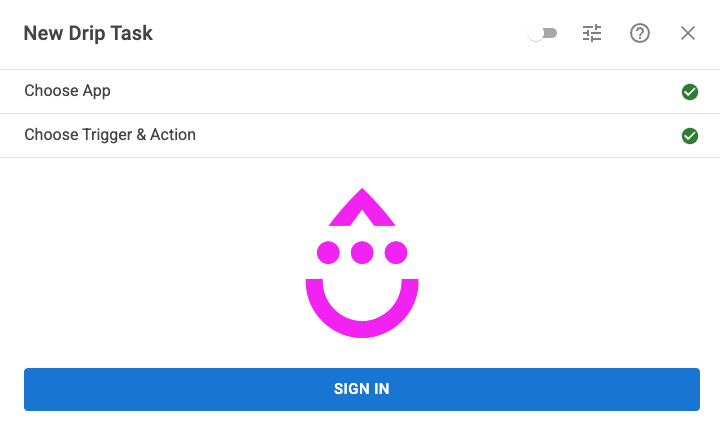
To create our connection with Drip, Click ADD CONNECTION to get started.

Get your Drip API Key
Before connecting to Drip, we need to get your Drip API key. Follow the steps listed below to grab your API key.
Step 1: Log into your Drip account by clicking here, then click on your name on the top right of the page.

Step 2: Click on "User settings"
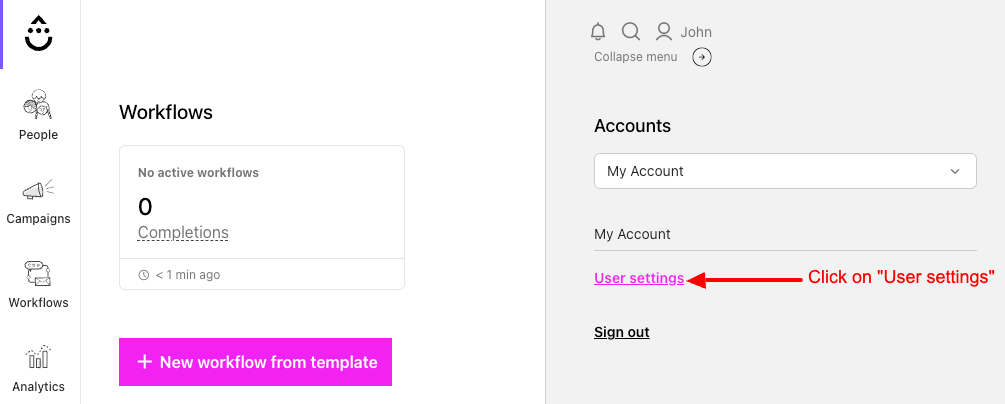
Step 3: Scroll down to the page until you find the "API Token" field which contains your API Key.
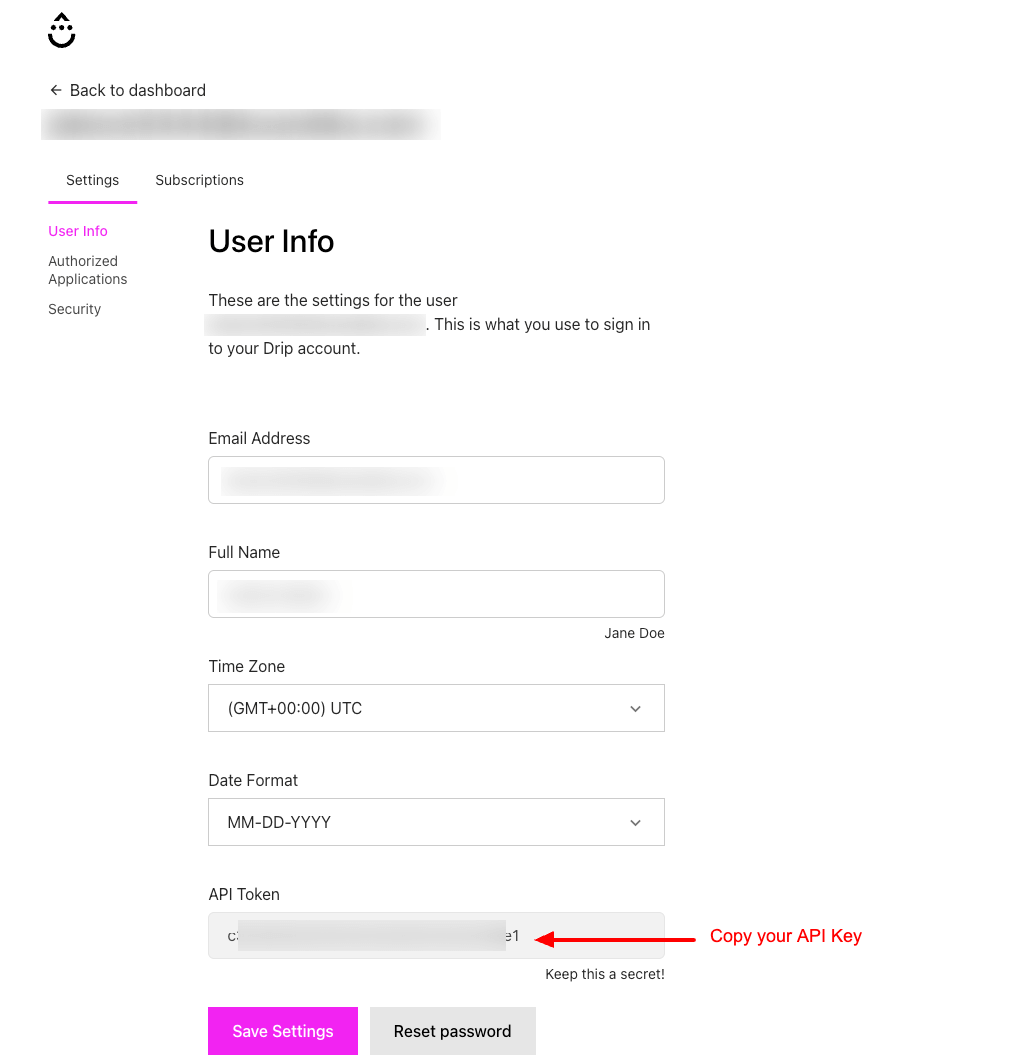
Get your Drip Account ID
Additionally to the API Key, you'll also need to find your Drip Account ID by following the steps listed below:
Step 1: From your Drip dashboard, click on the bottom left to the "Settings" icon, and then click on "Account"
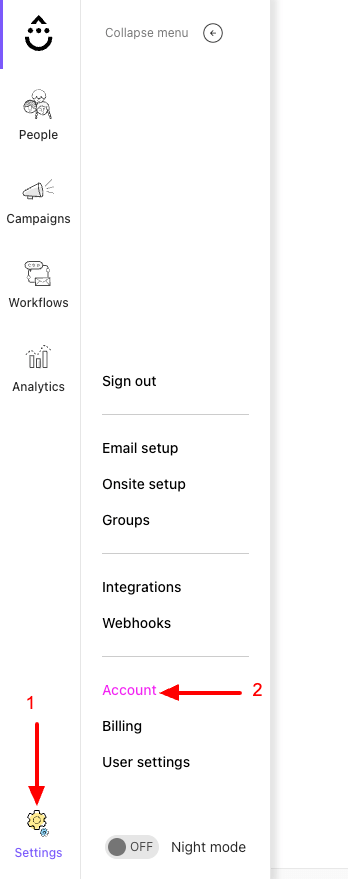
Step 2: Scroll down the page until you find the field "Account ID" which contains your account ID.
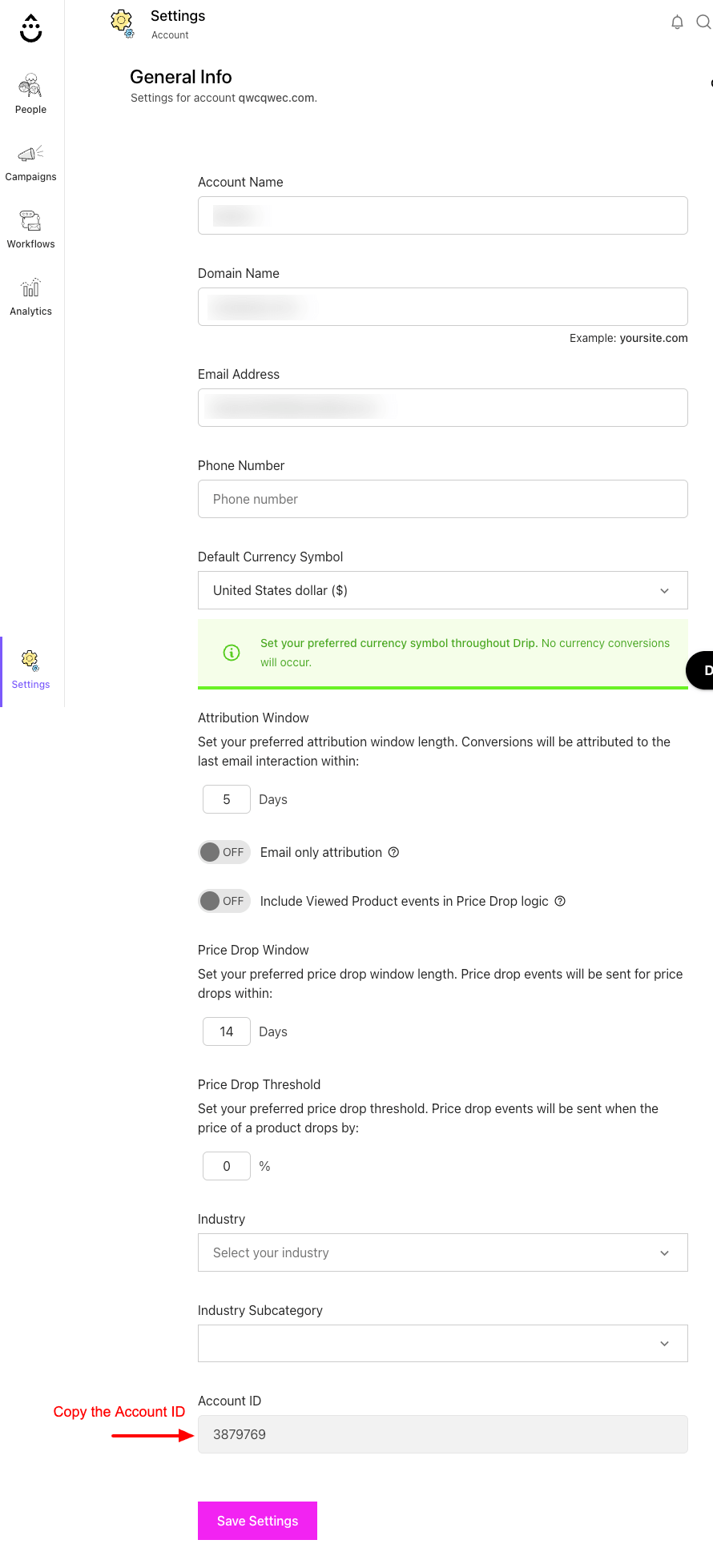
Now that we have your Drip API Key & Account ID, we can continue setting up the connection with Drip. Enter a connection name, paste your Drip API Key & Account ID in the fields Drip Name, API Key, and Account ID, respectively. Then click ADD CONNECTION.
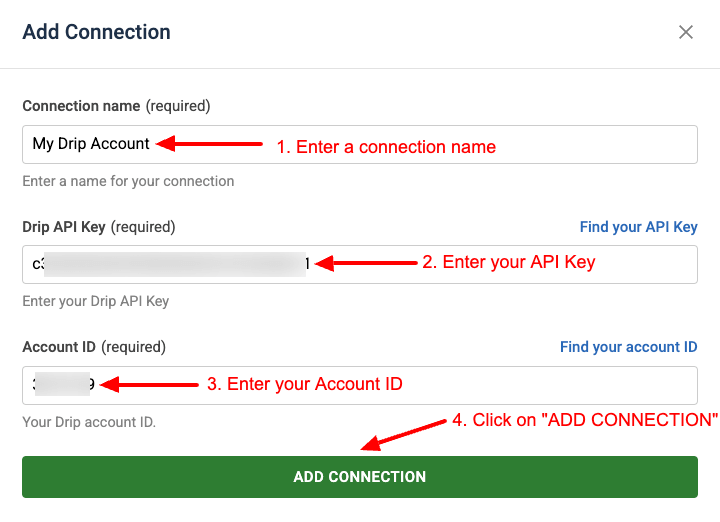
The connection has been added, and you can close the connections window.
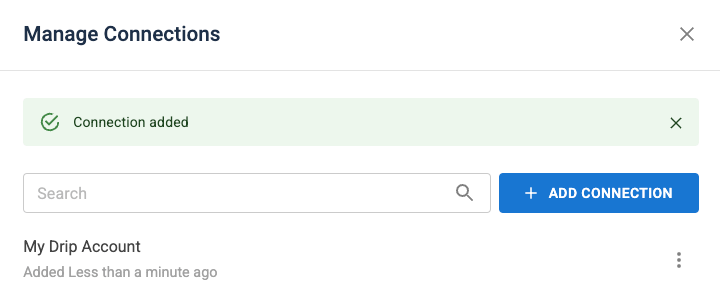
If you see the "Connection added" message, your connection with Drip has been established, and you can continue with the next step. If you see any error message, please review your API Key.
Select the newly created connection from the list and click CONTINUE.
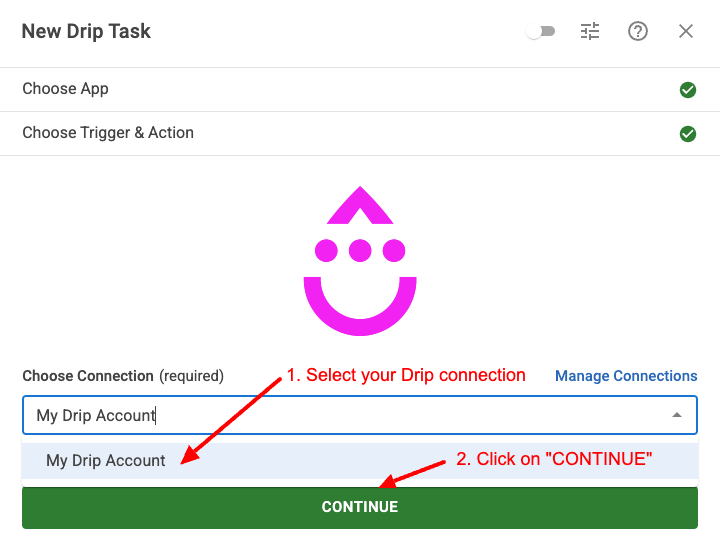
Ensure that your newly created Drip connection is selected in the dropdown.
Setup Action
After you've set up the trigger, action, and connection, it's time to set up the action itself and define what information to send to Drip. In this step, you can view all available settings and map each option with a fixed or dynamic value using Smart Tags.
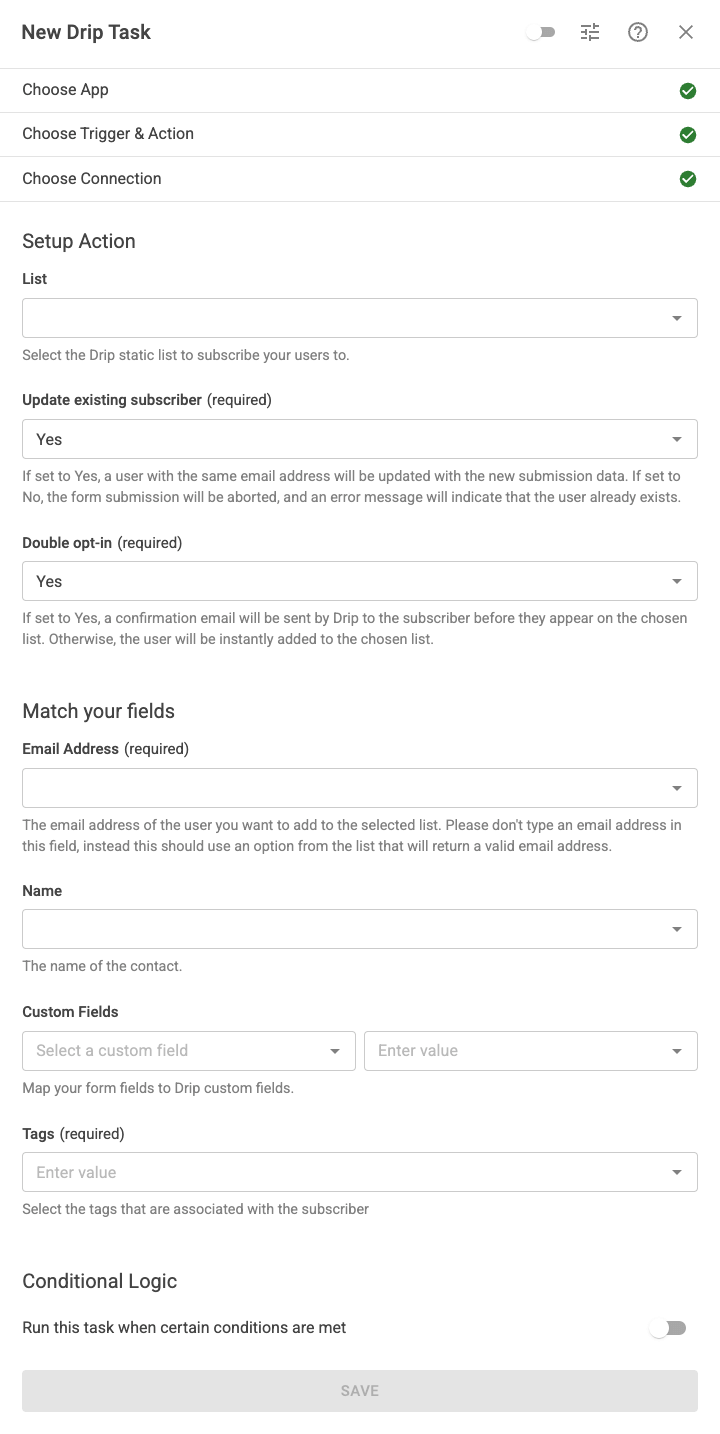
Let's see all available settings:
List
Select the Drip Email Series list to which your users will be subscribed to.
Update existing subscriber
Enable to update existing subscribers' information on your Drip account.
Double opt-in
If set to Yes, a confirmation email will be sent by Drip to the subscriber before they appear on the chosen list. Otherwise, the user will be instantly added to the chosen list.
Email Address
Select the email address of the submitter. This is the user that will be subscribed to your Drip list. Choose the Email field in your form.
Name
Set the name of the subscriber that will be added to your Drip list.
Custom Fields
Drip provides custom fields, which allow you to store additional information when a subscriber is saved on your Drip account, such as their name, age, company info, and more!
Tags
Additionally to custom fields, Drip also supports tags, allowing you to tag your subscribers and distinguish them.
Add Conditional Logic
Conditional logic makes it possible to run tasks only if specific criteria are met, like a user’s email address matching a certain domain, the user being associated with a certain Joomla User Group, or a form submission having a specific value.
While editing the Drip task, go to the Setup Action step and scroll down to the Conditional Logic section to set up Conditional Logic. Here's where you define all the rules the task should meet to run.
For example, let's say we need to sync submissions to Drip, only if the email is coming from a specific domain: @domain.com.
- Click to enable the Run this task when certain conditions are met.
- Click Add Your First Condition.
- Select the Email field in the Trigger dropdown.
- Select Contains in the Operator dropdown.
- Enter @domain.com in the value. Replace this with your domain name.
The condition should look like this:
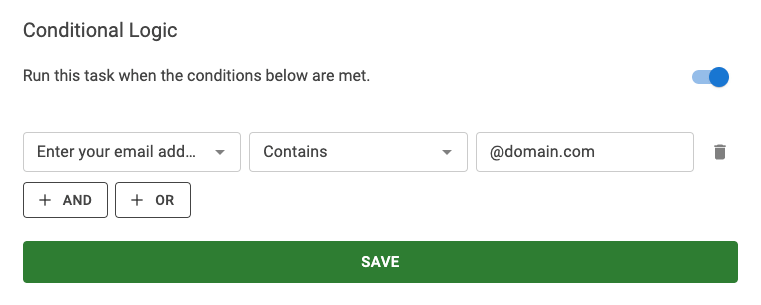
You can read more on Conditional Logic on the Working with Tasks documentation page.
Activate Task
The final step is to enable our task. To do so, click the toggle on the dialog’s top right corner, as shown in the screenshot below.

Finally, click Save to save the task, close the dialog, and then click Save from the top right corner of the form builder to save the changes on the form.
Congratulations! You’ve successfully created a form that syncs new submissions to the Drip email marketing service!






 Rated:
Rated: 